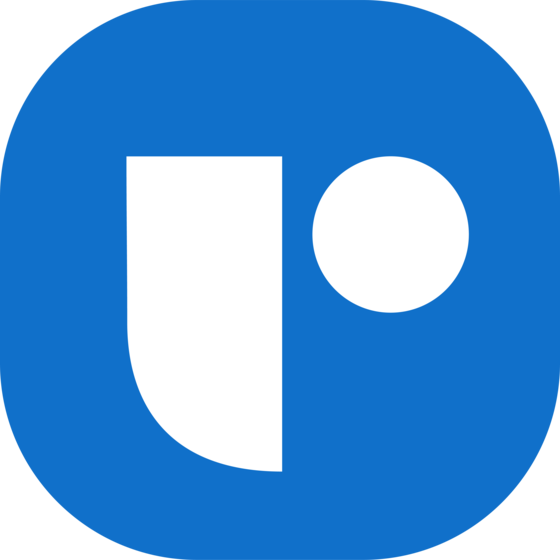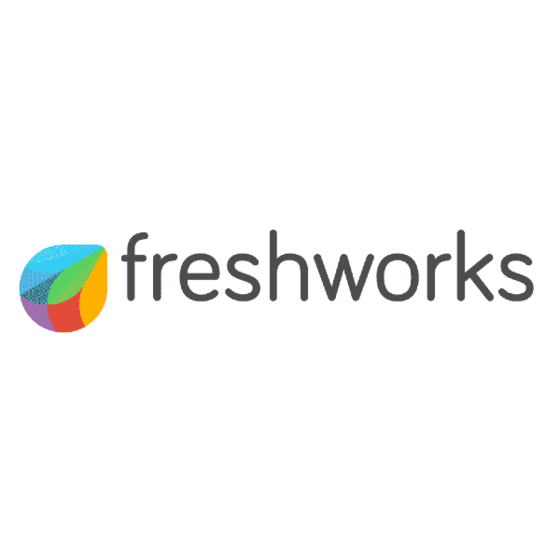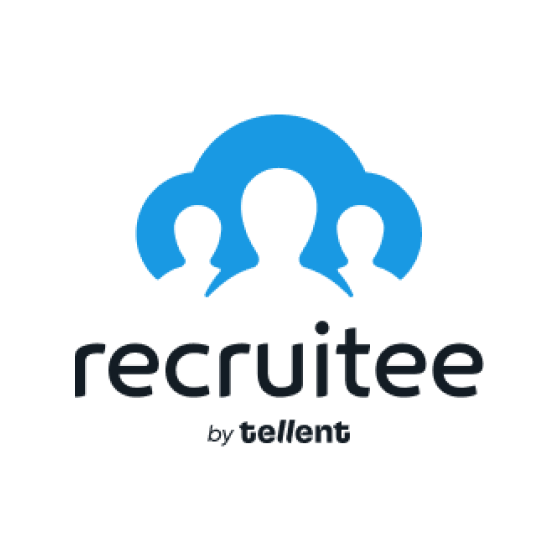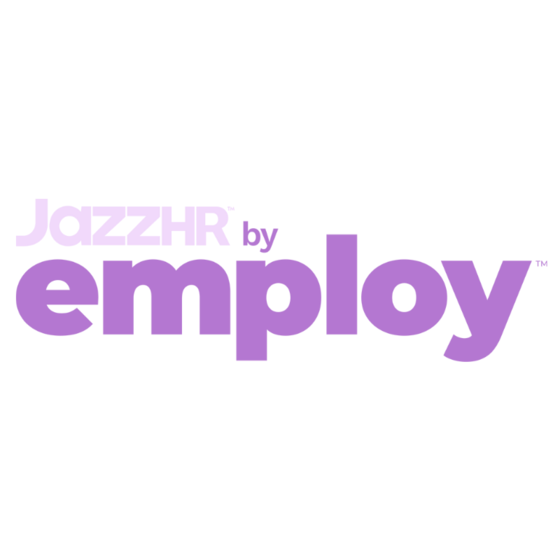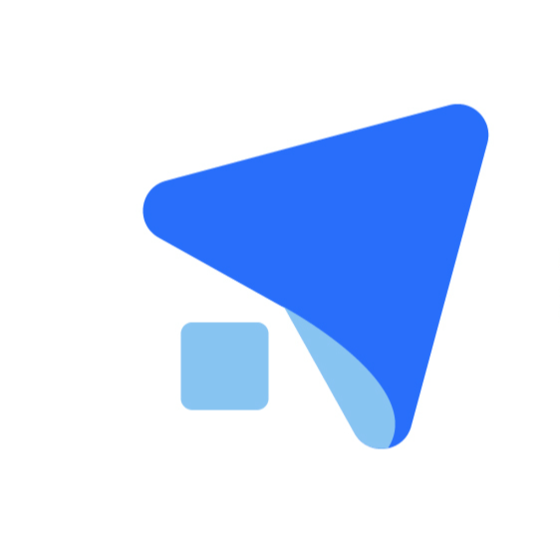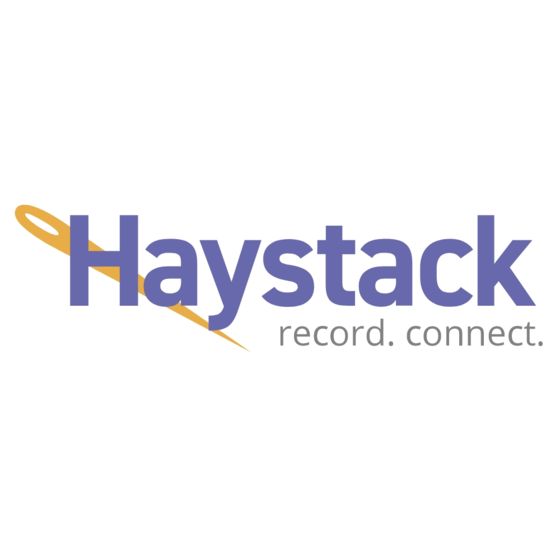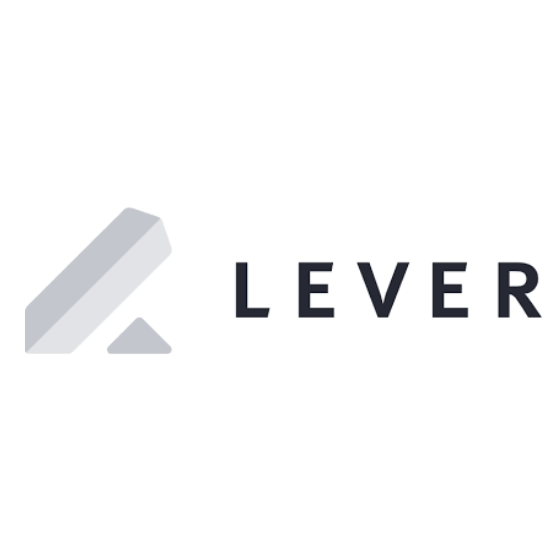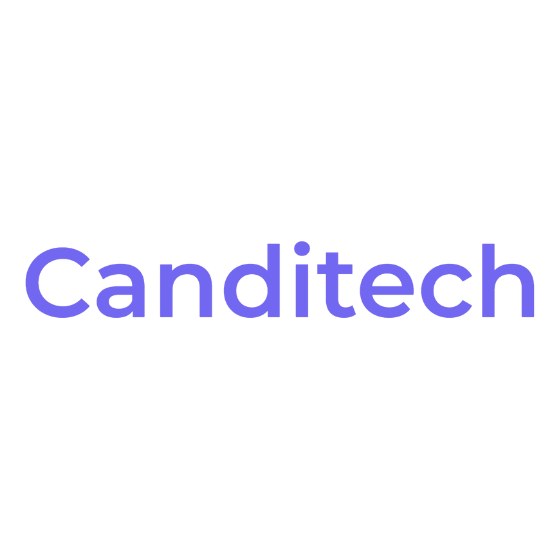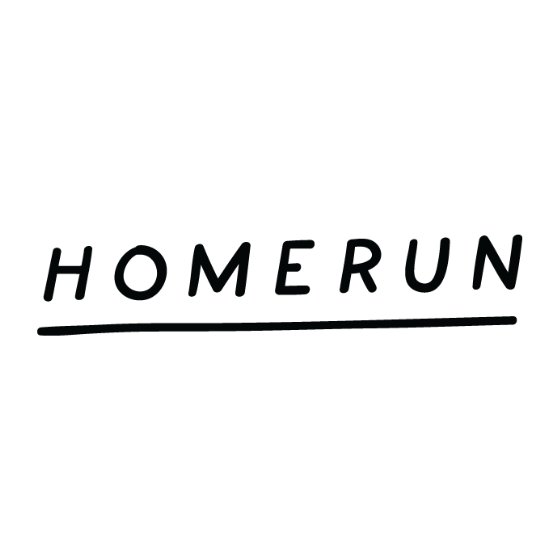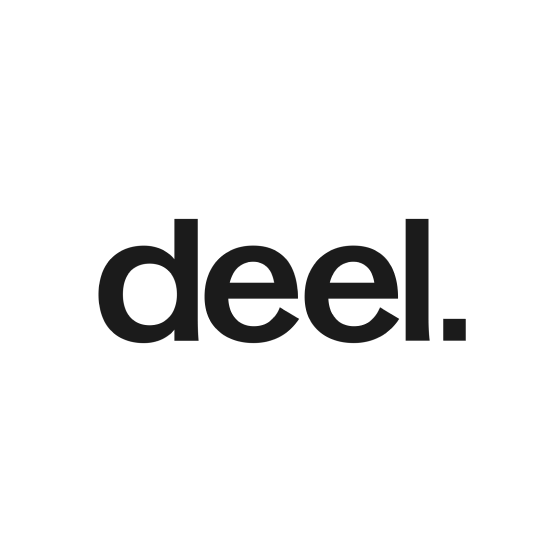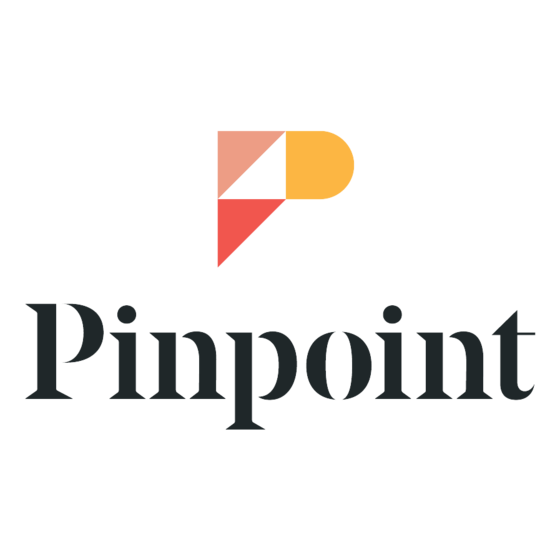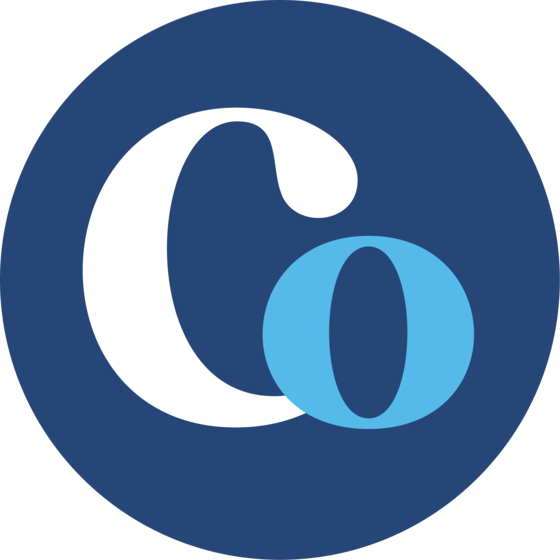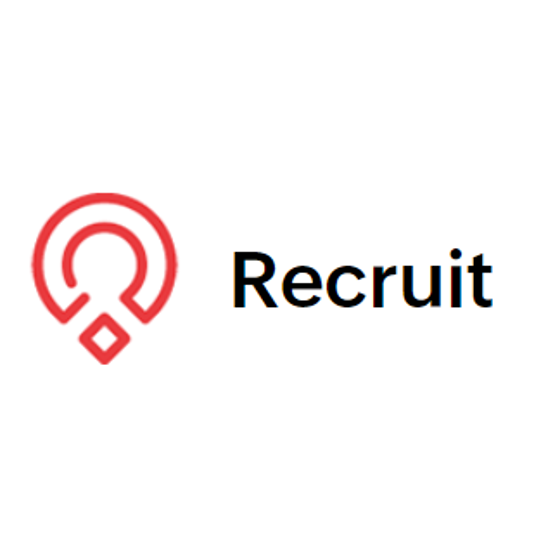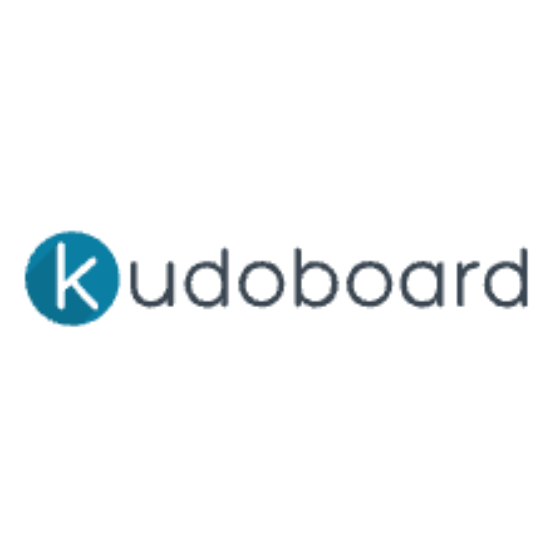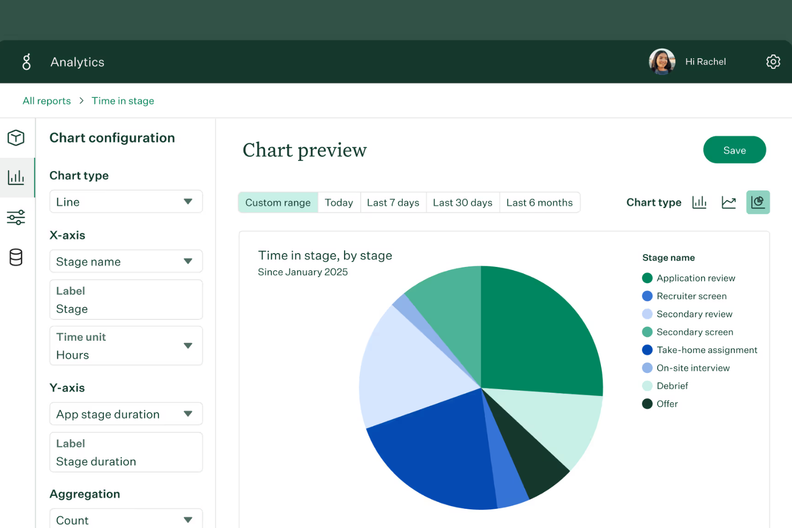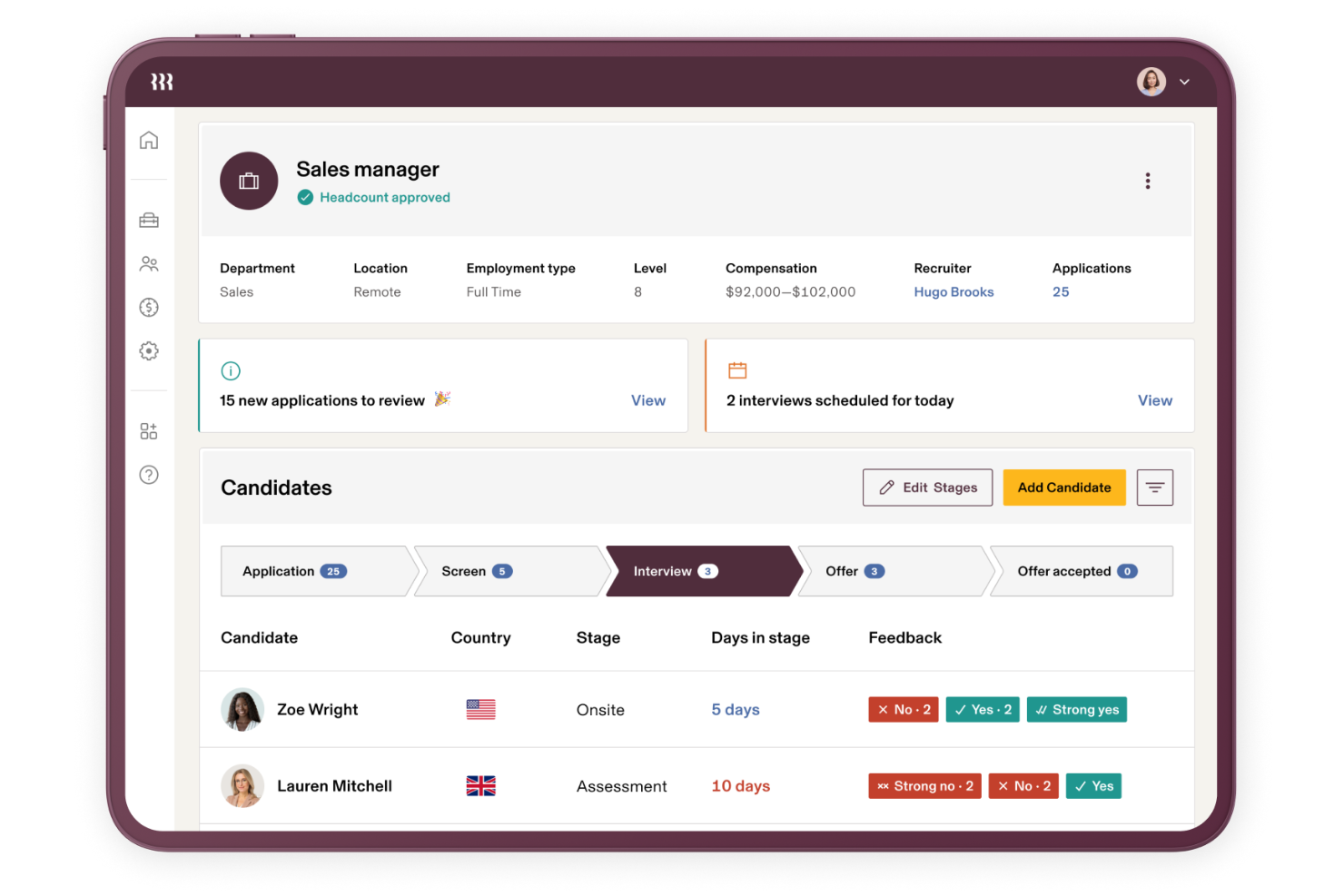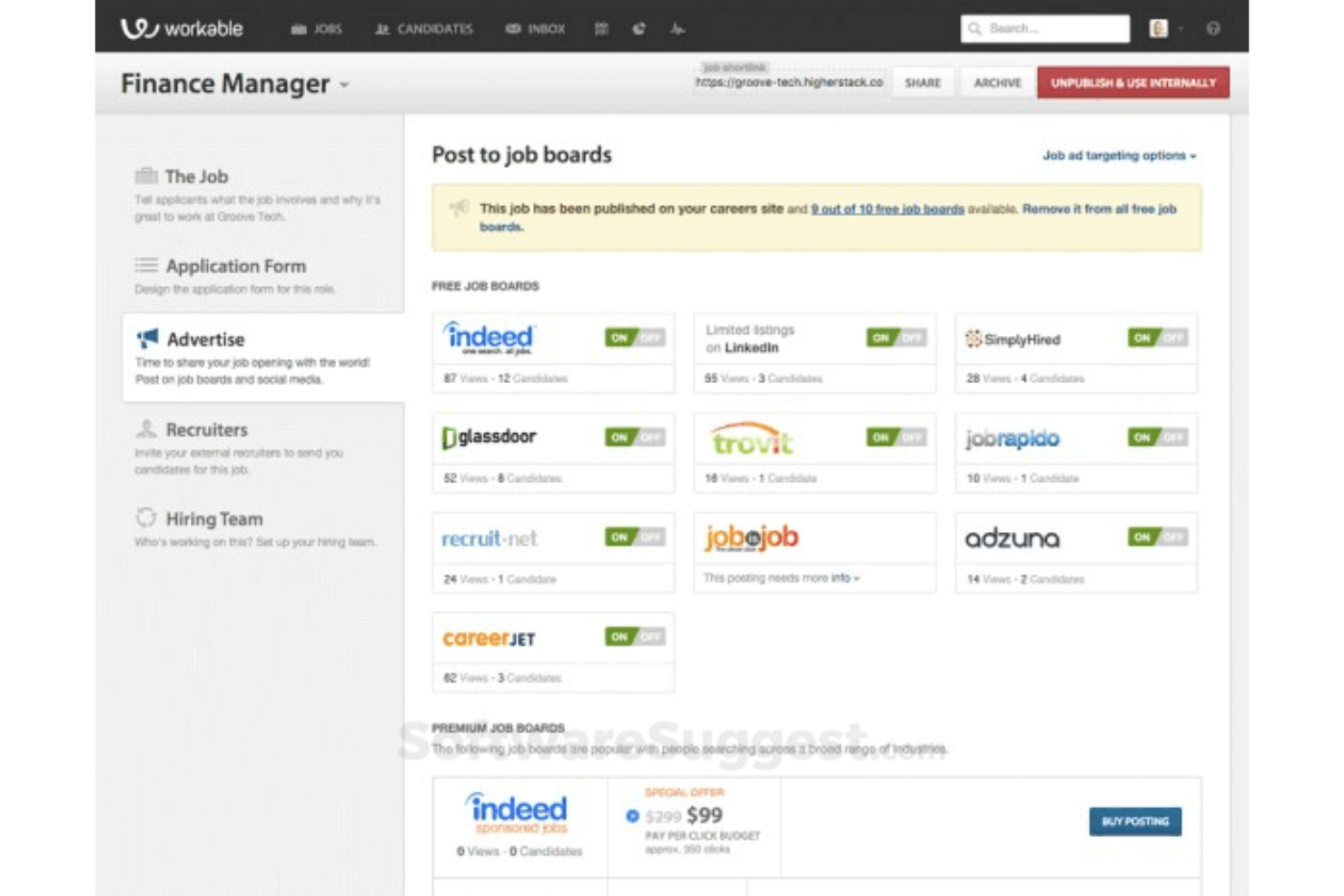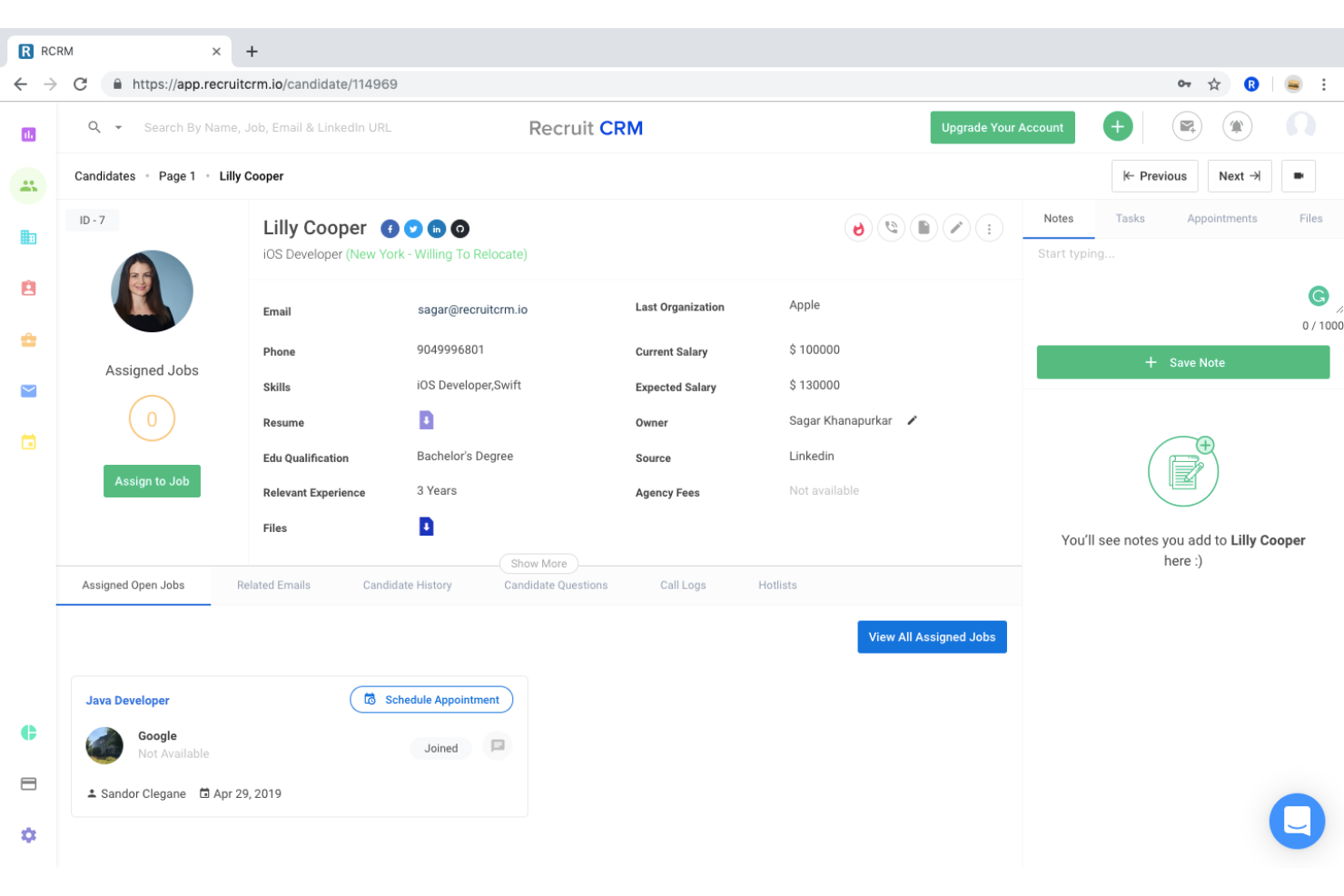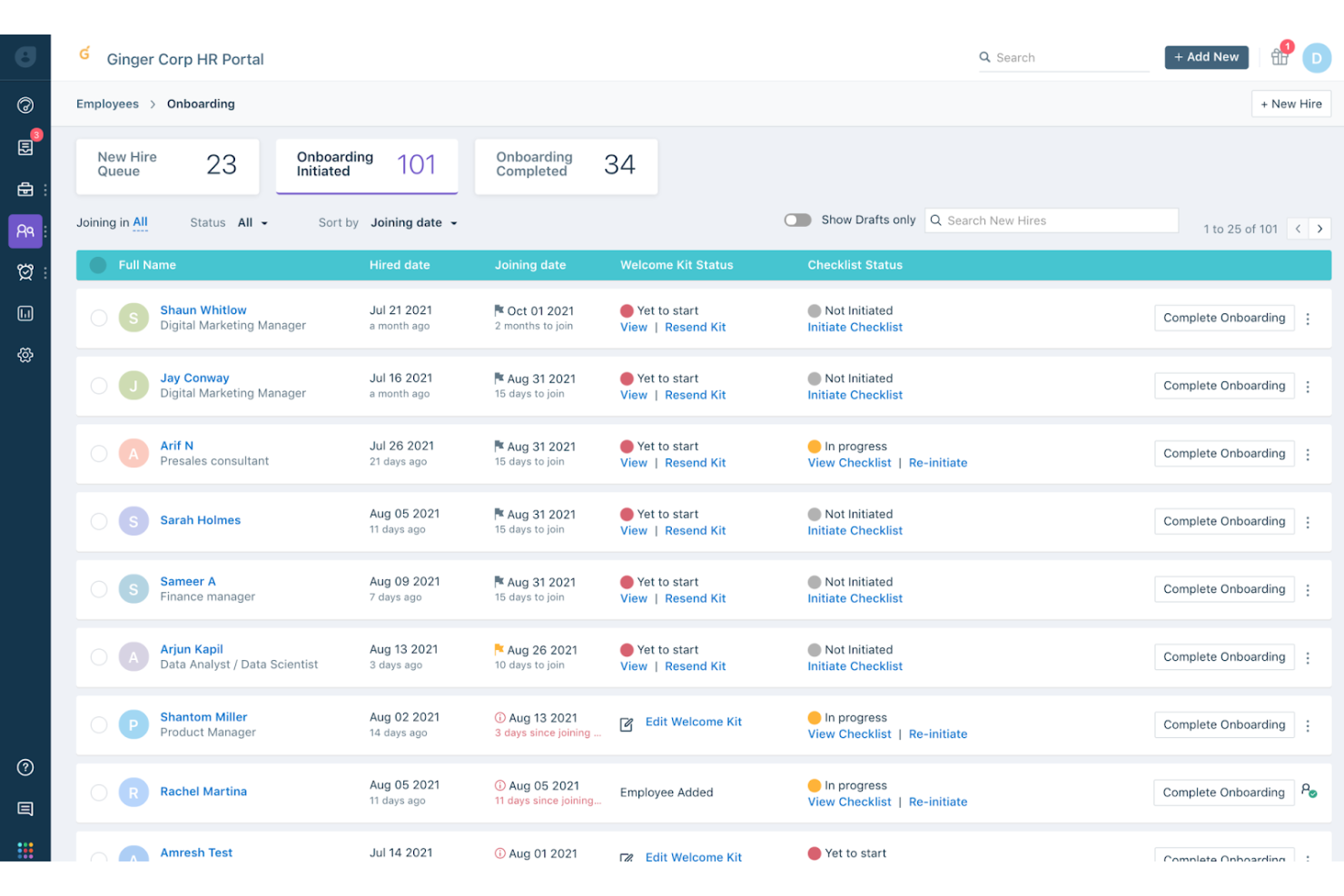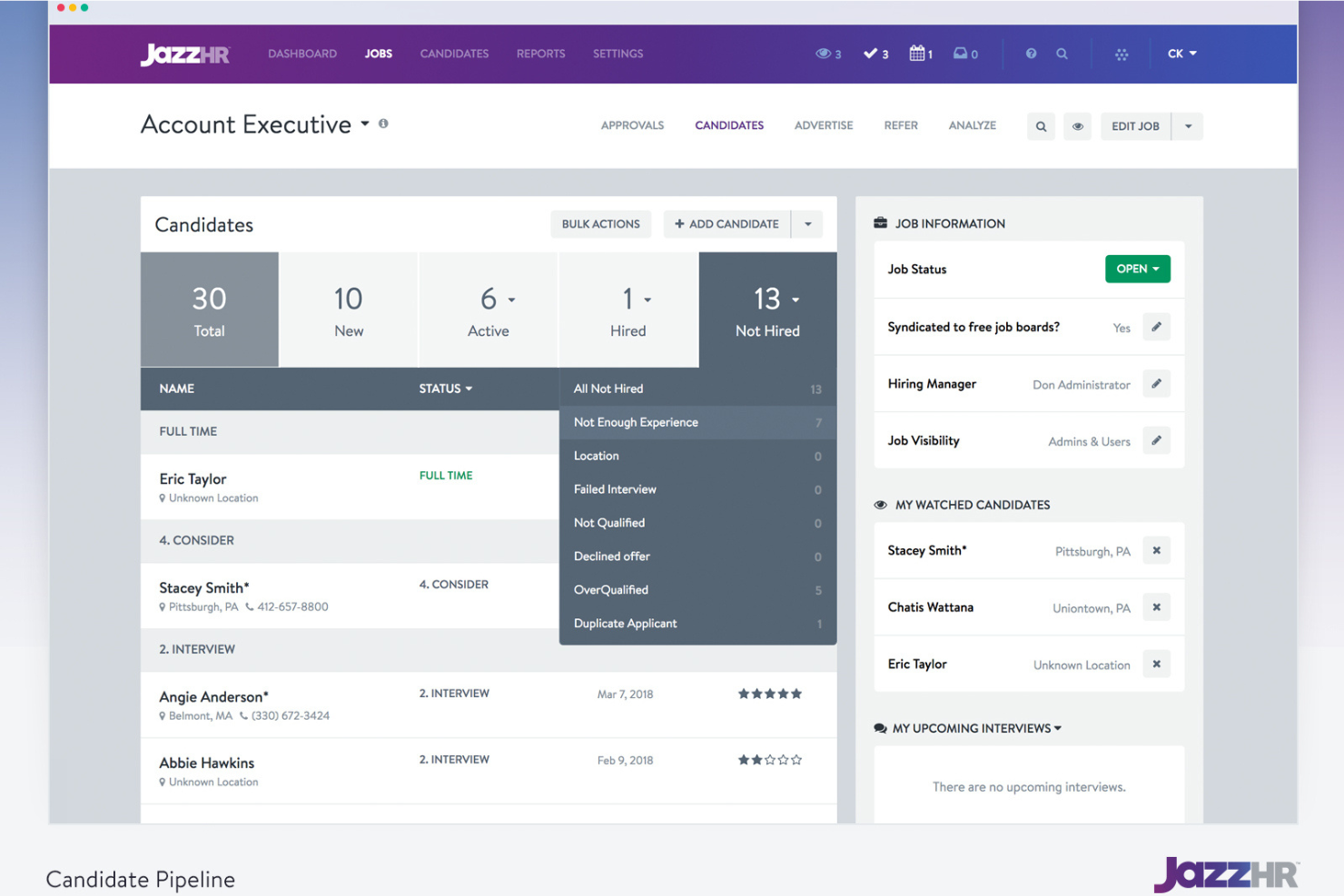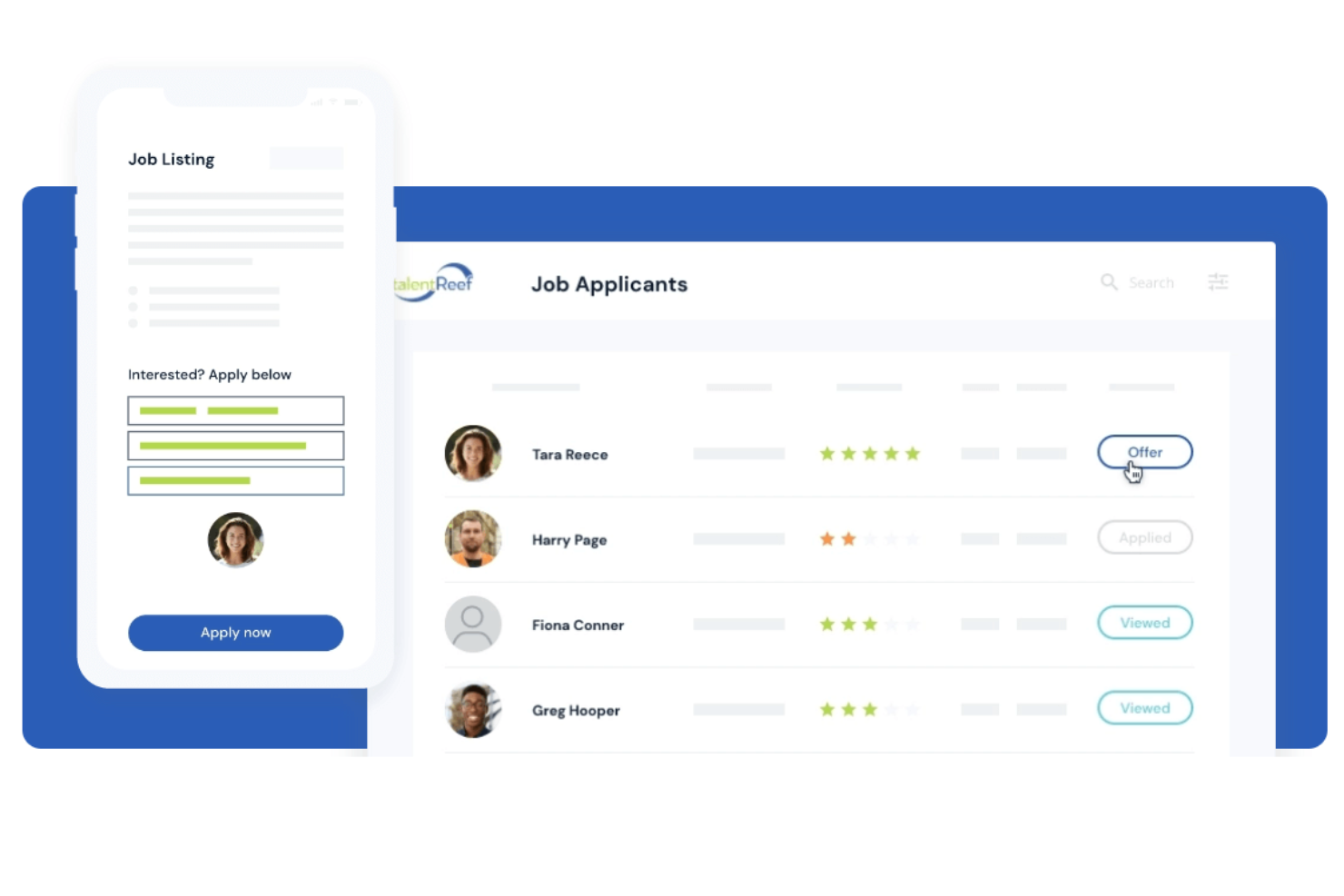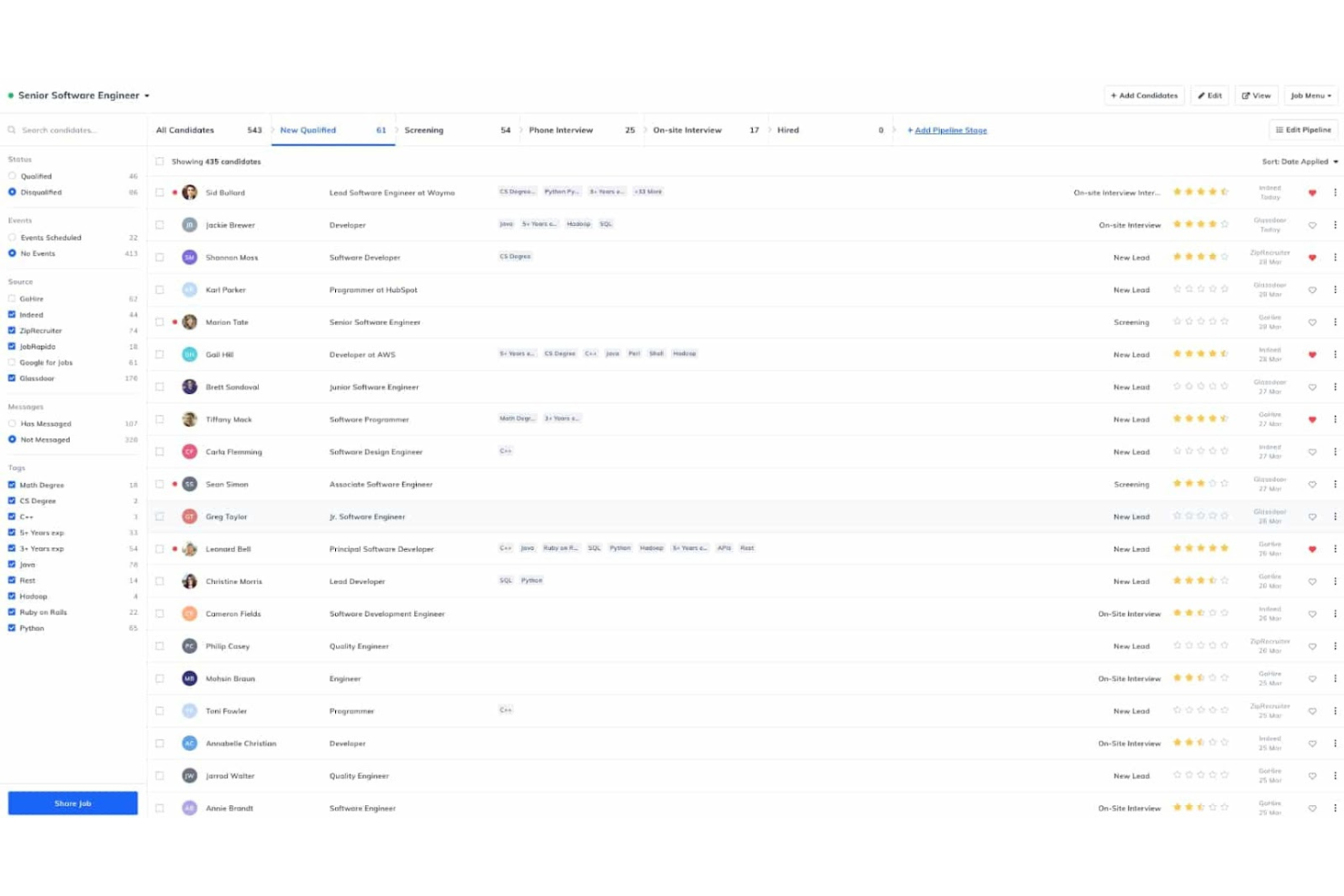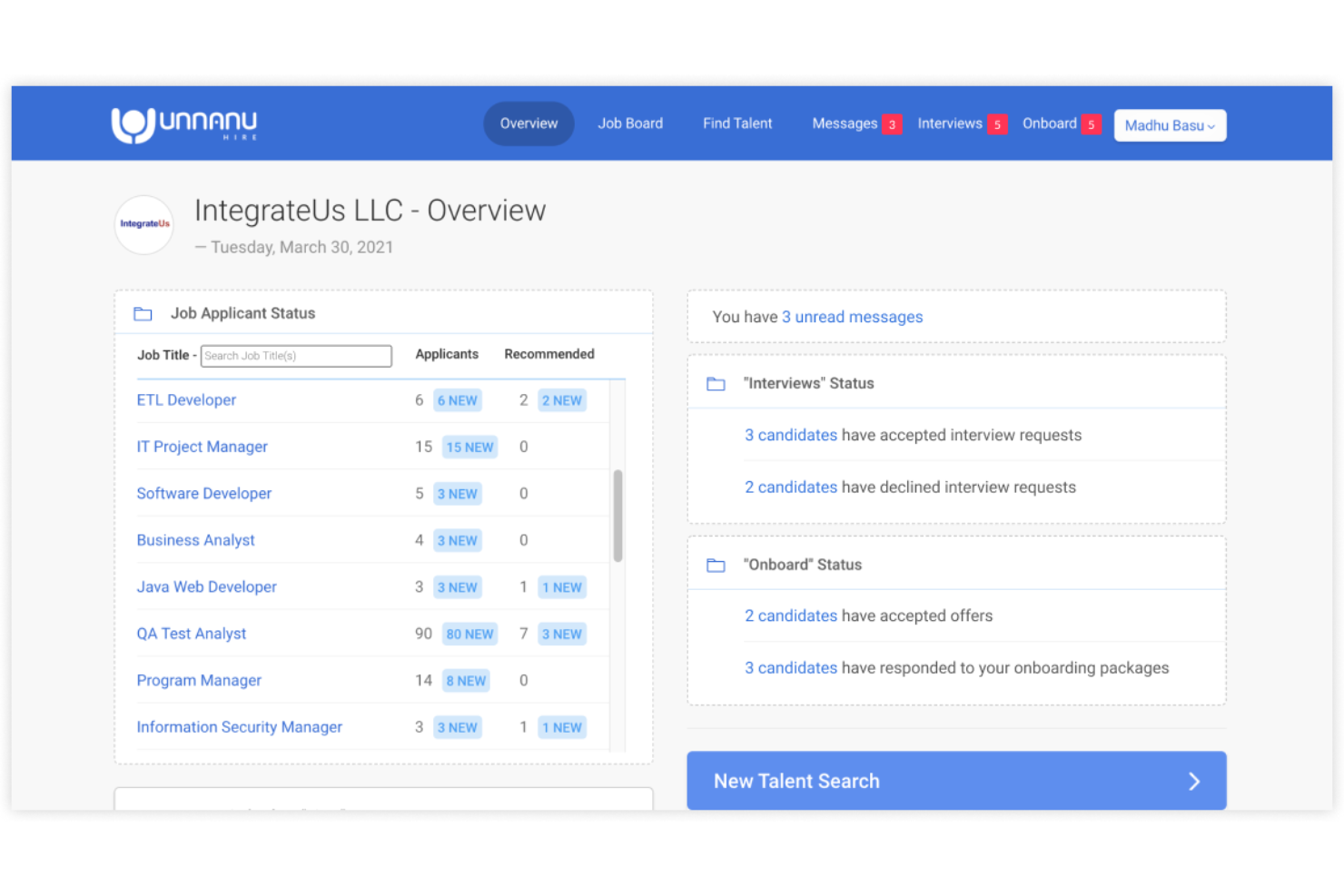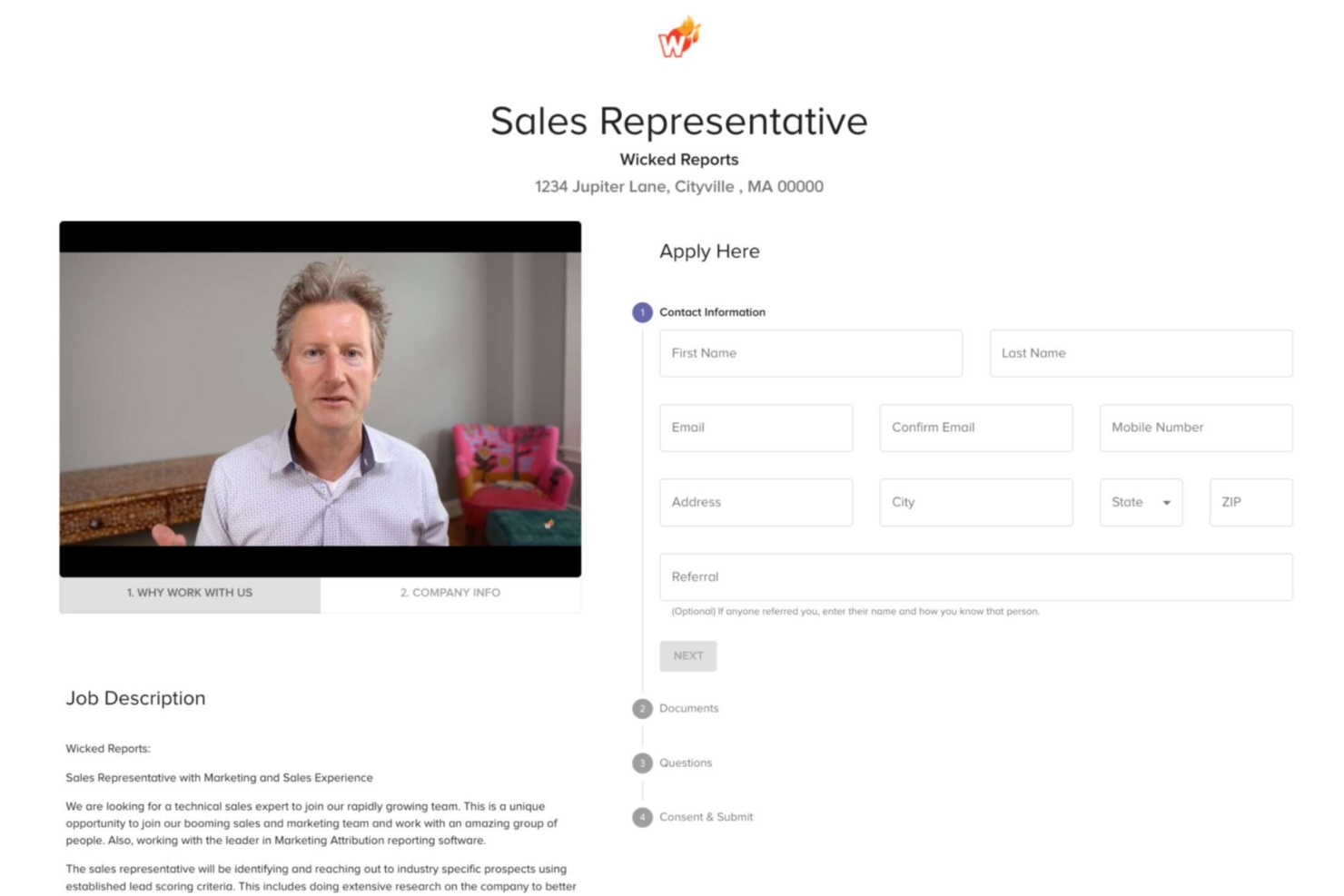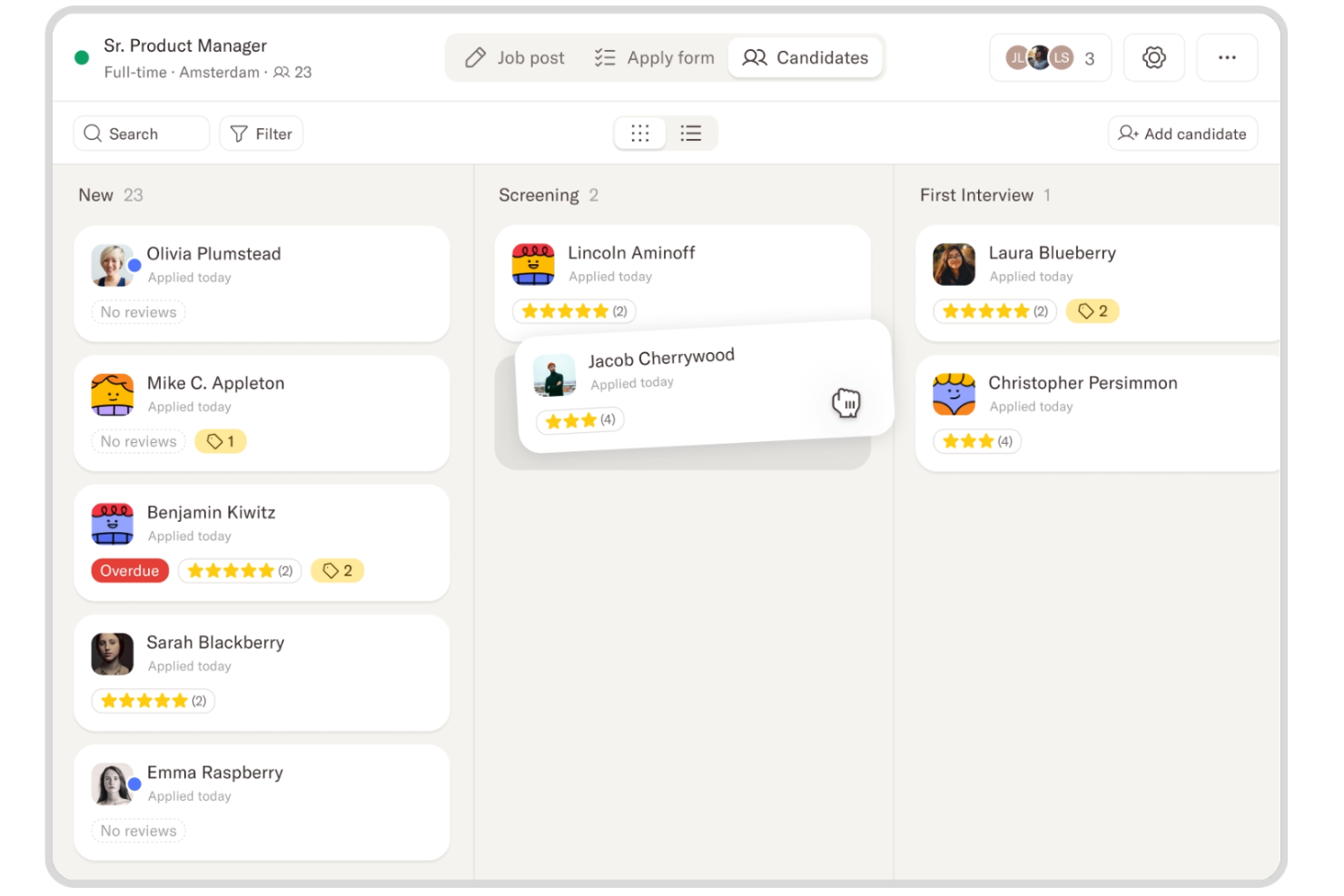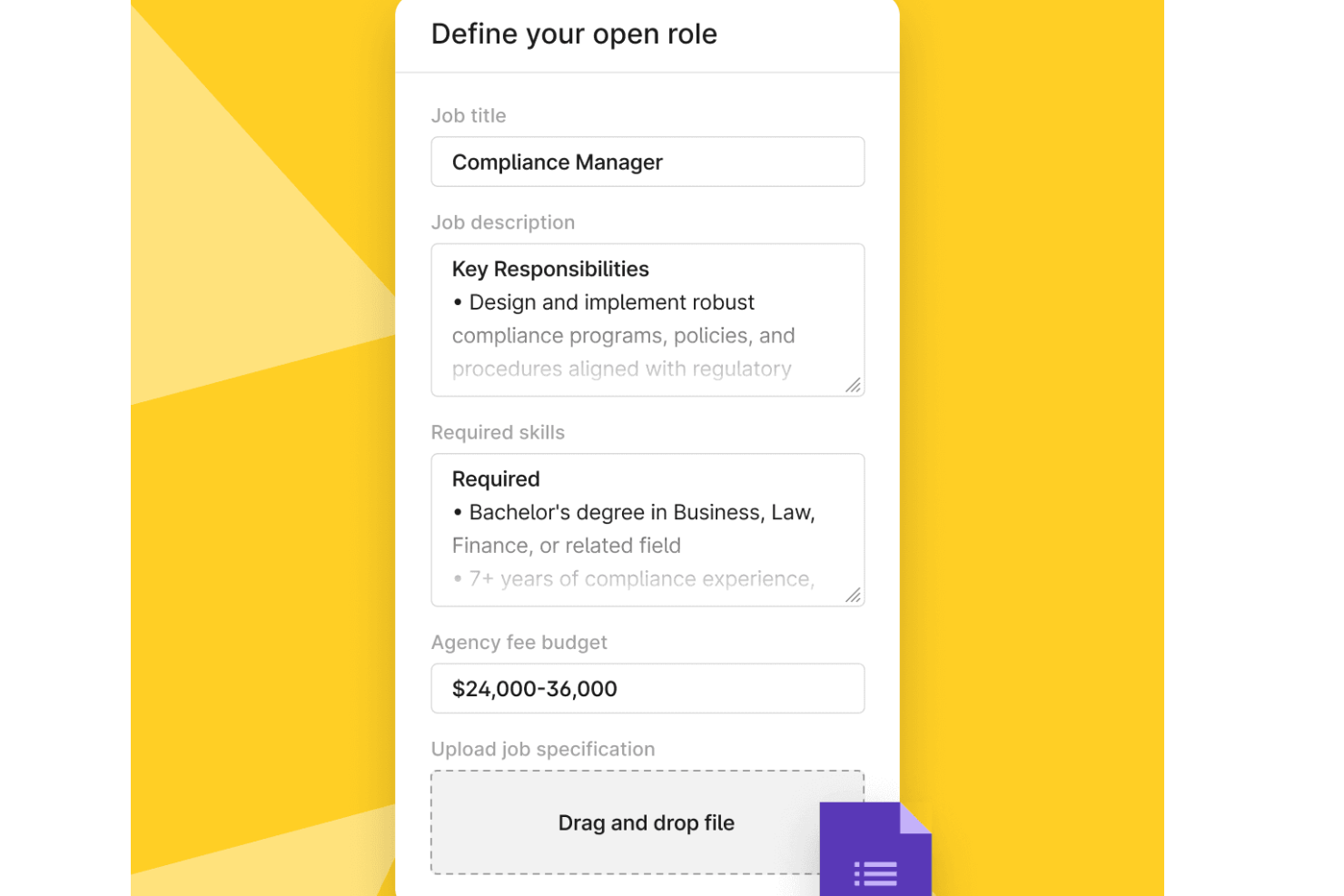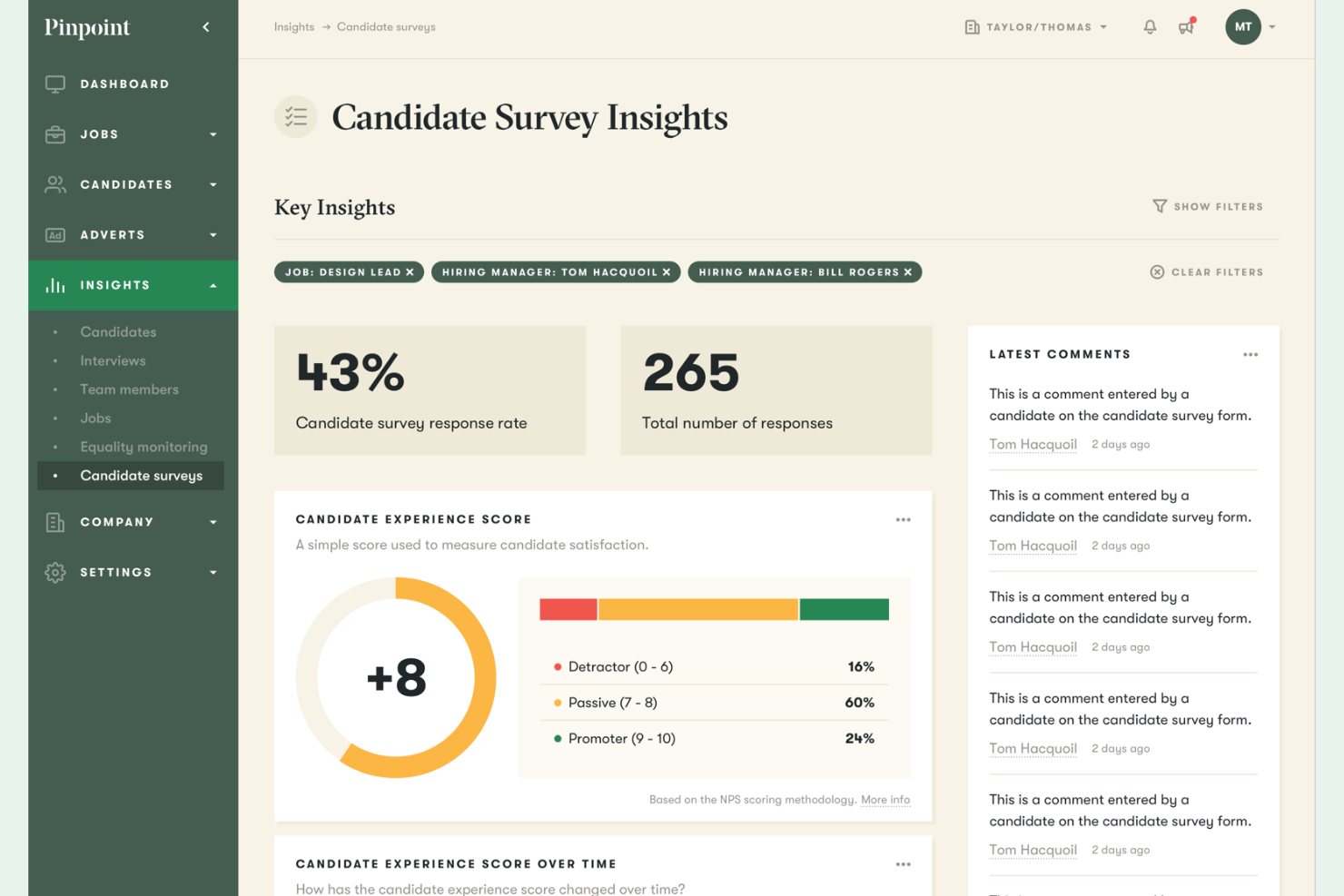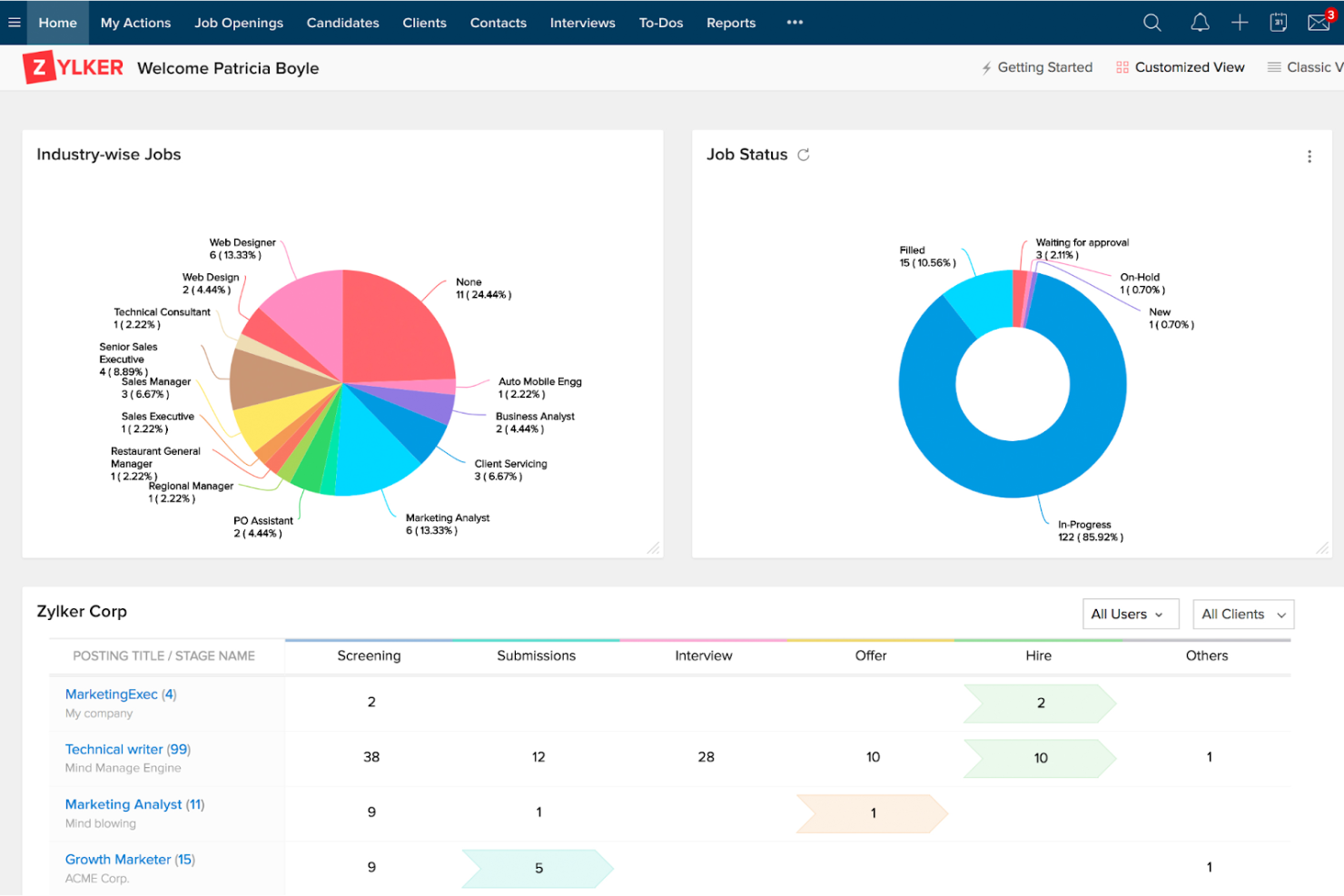20 Best Recruitment Software for Small Business
Here's my pick of the 20 best software from the 32 tools reviewed.
The best recruitment software for small businesses helps you streamline sourcing, screening, and hiring—so you can fill roles faster without overwhelming your already busy team.
When you're juggling daily operations and growth goals, a clunky hiring process can lead to bad candidate experiences, overlooked applicants, and staff shortages. The right platform centralizes applications, automates outreach, and offers collaboration tools—allowing you to stay organized and responsive.
With features like automated interview scheduling, resume parsing, and built‑in reporting, these tools not only save time but also help you make smarter hiring decisions.
Using my experience recruiting in small organizations, I've tested dozens of user-friendly platforms tailored to small-team budgets and needs, and curated the top options that are intuitive, affordable, and designed to grow with your business.
Why You Can Trust Our Software Reviews
We've been testing and reviewing recruiting software since 2019. As HR professionals ourselves, we know how critical and difficult it is to make the right decision when selecting software.
We invest in deep research to help our audience make better software purchasing decisions. We've tested more than 2,000 tools for different HR use causes and written over 1,000 comprehensive software reviews. Learn how we stay transparent, and take a look at our software review methodology.
Best Recruitment Software for Small Businesses: Pricing Comparison Chart
This comparison chart summarizes basic details about my top recruitment software selections for small business owners to help you find the best software for your budget and business needs.
| Tool | Best For | Trial Info | Price | ||
|---|---|---|---|---|---|
| 1 | Best recruiting software for a structured approach to hiring | Free demo available | Pricing upon request | Website | |
| 2 | Best AI-powered recruiting software | 14-day free trial | From $15/user/month | Website | |
| 3 | Best for small HR teams | Free demo available | From $8/user/month (billed annually) | Website | |
| 4 | Best recruitment software for assisted onboarding | 15-day free trial + free demo | Starting at $299/month | Website | |
| 5 | Best for AI-enhanced recruitment automation | Free trial available | From $84/user/month | Website | |
| 6 | Best for fast resume screening | 21-day free trial | From $1.20/user/month + $71/month base fee | Website | |
| 7 | Best for human-powered hiring support | Free demo available | From $249/month | Website | |
| 8 | Best collaborative hiring software | 18-day free trial | From $269/month | Website | |
| 9 | Best recruitment software for unlimited users | 14-day free trial | From $75/month | Website | |
| 10 | Best for recruiting hourly workers | Free demo available | Pricing upon request | Website | |
| 11 | Best for integrating with your website | 14 days free trial | From $89/month | Website | |
| 12 | Best for mitigating candidate scoring bias | Free trial available | From $4.99/month (billed annually) | Website | |
| 13 | Best for video-forward recruitment strategies | 30-day free trial | From $79/month | Website | |
| 14 | Best for talent relationship management | Free demo available | Pricing upon request | Website | |
| 15 | Best for job simulation tests | Free trial + free demo available | From $55/user/month | Website | |
| 16 | Best for ready-to-use job templates | 15-day free trial + free plan available | From $27month (3 users) | Website | |
| 17 | Best for global agency-sourced hiring | Free trial + demo available | From $29/month | Website | |
| 18 | Best for attracting top talent | Free demo available | Pricing upon request | Website | |
| 19 | Best for an AI-powered ATS | Free demo available | Pricing upon request | Website | |
| 20 | Best for scalability | 15-day free trial + free plan available | From $25/user/month (billed annually) | Website |
-

Kudoboard
Visit WebsiteThis is an aggregated rating for this tool including ratings from Crozdesk users and ratings from other sites.4.8 -

Rippling
Visit WebsiteThis is an aggregated rating for this tool including ratings from Crozdesk users and ratings from other sites.4.8 -

Paylocity
Visit WebsiteThis is an aggregated rating for this tool including ratings from Crozdesk users and ratings from other sites.4.5
Best Recruitment Software for Small Businesses Reviews
Here’s a brief description of each recruitment software that showcases each system’s best use case, their noteworthy features, and some pros & cons. I’ve also included screenshots to give you a snapshot of their user interface too.
Best recruiting software for a structured approach to hiring
Greenhouse is a recruitment software system based on a structured approach to hiring, designed to give you the technology and support needed to make the right recruitment decisions.
Why I picked Greenhouse: This HR software tool helps you to source and nurture the right candidates and set up a fair hiring process. You get robust data and reports, so your hiring team can improve continuously. The software can scale to suit the needs of your business, with the mobile apps providing additional flexibility.
You can engage new hires the moment an offer is accepted, then design a personalized welcome experience. The software automates task execution for administrative actions and helps you organize important company resources. Insightful reports and new-hire feedback will also help you improve your recruiting processes.
Greenhouse Standout Features and Integrations
Features include applicant tracking, structured hiring, team collaboration, automated task management, multichannel sourcing, candidate sourcing, core reports, and mobile apps.
Integrations include Arbeitnow, Canditech, Cord, Google Meet, LinkedIn, Microsoft Teams, Monster, Paradox, StepStone, and ZipRecruiter.
Pros and cons
Pros:
- Easy scheduling
- A one-stop shop for recruiting
- Transparent recruitment processes
Cons:
- Limited reporting
- Too metrics-focused
New Product Updates from Greenhouse
Greenhouse's New Analytics, Real Talent™, AI scheduling, and Onboarding
Greenhouse rolled out four major improvements to help you hire smarter and faster: a revamped analytics platform, Real Talent™ fraud detection and AI matching, AI-powered interview scheduling, and dynamic onboarding enhancements. Each update boosts insights, candidate quality, coordination, and new-hire setup. Visit Greenhouse's website for more.
Manatal offers AI-based recruitment software that helps small businesses and other organizations source and hire candidates faster.
Why I picked Manatal: This easy-to-use recruitment software comes with a lot out of the box for small businesses. Handy Kanban boards give you an overview of your recruitment process in a single view, and you can use the drag-and-drop interface to customize your recruitment pipeline based on your internal process.
It helps you post jobs far and wide and source from a database of over 600 million candidates. When the applications come flooding in, the system's artificial intelligence engine simplifies the screening process by suggesting the best candidates based on your job descriptions and you can score candidates’ profiles based on job requirements, facilitating better screening.
Manatal Standout Features and Integrations
Standout features include the intuitive Kanban-style applicant tracker, automated role matching based on job description and candidate profile, and the ability to easily share your jobs on thousands of free and premium channels.
Integrations include Codility, Facebook, Flexjobs, Indeed, Instajobs, Line, LinkedIn, Mailchimp, Twitter, and WhatsApp.
Pros and cons
Pros:
- Customizable templates
- Structured candidate management
- Candidate recommendations increase efficiency
Cons:
- Sometimes laggy
- No way to save filters
Rippling is a workforce management platform that includes recruitment tools designed for small teams wearing many hats. It ties hiring to payroll, benefits, IT, and compliance, so you can manage everything in one system without needing separate tools.
Why I picked Rippling: I picked Rippling because small teams often don’t have a full HR department—or even a dedicated HR person. If you're the one handling hiring, onboarding, payroll, and benefits, having those pieces work together in a single platform makes a big difference. You can send offers, start background checks, and set up onboarding in minutes without hopping between systems.
Rippling also helps you avoid compliance slip-ups that can happen when you’re stretched thin. With built-in guardrails and automation, you can focus on finding the right people without worrying about missing key steps.
Rippling Standout Features and Integrations
Features include policy automation, compensation bands, onboarding workflows, learning management, and global hiring tools for when your team starts to grow across borders.
Integrations include Slack, Checkr, Google Workspace, Zoom, Asana, Salesforce, Microsoft 365, Hubspot, Carta, GitHub, Jira, and Datadog.
Pros and cons
Pros:
- Strong compliance and data protections
- Supports international hiring and payroll
- Automates hiring, onboarding, and IT tasks
Cons:
- Full value is clearest when using multiple modules
- Can be overwhelming for small teams at setup
New Product Updates from Rippling
Rippling Now Integrates with Points North
Rippling's new integration with Points North automates certified payroll reporting, ensuring compliance with Davis-Bacon and prevailing-wage laws by synchronizing data in real time and reducing manual errors. More details at Rippling Blog.
As one of the world’s most popular recruiting and HR systems, Workable has multiple options to scale as you do.
Why I picked Workable: Workable's out of the box candidate sourcing suite and applicant tracking system are economical choices for small businesses in spreadsheet and email purgatory and want to start taking their hiring more seriously.
Their solution allows you to fill your candidate pipeline quickly by posting to over 200 job sites, bolstered by AI-powered sourcing and employee referrals. It makes it easy to evaluate applicants, gather feedback, and has some automations to help move them through the process efficiently.
There's also the option to add their human resource information system and onboarding features to serve as an integrated HR system.
Workable Standout Features and Integrations
Standout features include the ability to easily post jobs across 200+ jobs boards, their talent CRM database that acts as a single source of truth for candidate data, and a no code careers page builder.
Integrations include CharlieHR, Enboarder, Gmail, Google Calendar, Humaans, LinkedIn, Microsoft 365 Outlook, Microsoft Teams, Paylocity, and Personio.
Pros and cons
Pros:
- Efficient candidate grouping
- Highly customizable
- Tracking candidates by email ID
Cons:
- No way to consolidate candidate information
- Too many clicks required
New Product Updates from Workable Recruiting
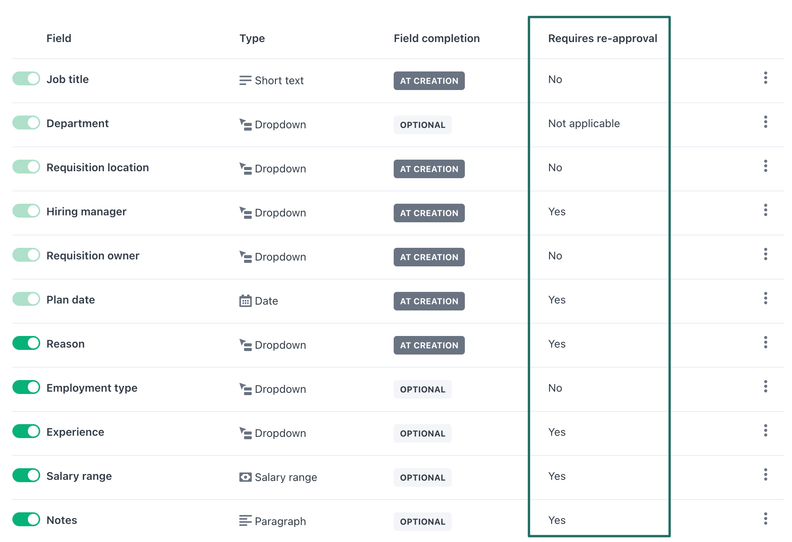
Direct Editing Access in Workable’s Hiring Plan
HR admins can now update filled requisitions directly in Workable’s Hiring Plan, editing fields like fill date and salary to ensure compliance and accurate reporting. For more details, visit Workable's updates.
Recruit CRM an applicant tracking system (ATS) and candidate relationship management (CRM) software with numerous automations and integrations to enhance all phases of the recruitment process and help recruiters work smarter.
Why I picked Recruit CRM: I included Recruit CRM in this list because of the intuitive way it helps manage client and candidate relationships, which is critical for small businesses that need to use their resources efficiently.
This includes a Kanban talent pipeline view, an email sequencing feature that uses AI + automated triggers and templates to prompt email responses to all candidate communications, and an AI integration that can help write job descriptions, notes, candidate summaries, or new templates.
Recruit CRM Standout Features and Integrations
Standout features include the aforementioned email sequencer, a Chrome sourcing extension, an AI resume parser for faster screening, and the ability to run custom reports on all types of common recruiting metrics, or use one of their built-in reports, such as their Recruiter KPI Report, their Candidate Lifecycle Report, a Job Statistics Report, or a Client Performance Report.
Recruit CRM is known for its intuitive and customizable platform, exceptional customer service, and constant product updates.
Integrations include Chrome, LinkedIn, Xing, Gmail, and Outlook. Additionally, the platform integrates with over 5,000 apps through Zapier or Integrately (paid plan required).
Pros and cons
Pros:
- Customer support is responsive to user feedback
- 24/7 live chat customer support
- Full integration of ChatGPT4 into it's software
Cons:
- No built-in spell check function within email campaigns
- Lack of native integrations
New Product Updates from Recruit CRM
Recruit CRM's Enhanced CV Formatting Feature
Recruit CRM introduces CV formatting to personalize resumes, redact sensitive info, and streamline submissions. For more information, visit Recruit CRM's official site.
Freshteam is geared towards the sourcing part of the recruitment process, helping to process candidate data for targeted outreach campaigns.
Why I picked Freshteam: When using Freshteam, you can post all your open positions to major job boards with a single click. You can also use sponsored job listings or display a list of open positions on any webpage.
Each candidate has a single profile that holds their entire history with your organization, including everything from emails and interview feedback to notes and sourcing methods. Freshteam reminds you when a response is due, sends out automatic notifications, and gives you clear visibility into the candidate pipeline.
Each recruiter gets a dashboard telling them what needs their attention. Team members can discuss candidates, leave comments, add ratings, and consolidate their hiring decisions.
Freshteam Standout Features and Integrations
Features features include advanced email campaign capabilities, enabling you to design and execute targeted campaigns delivering personalized messages to candidates based on their interactions and interest levels, and their AI matching tool to help you prioritize the most suitable candidates and craft compelling emails.
Integrations include Adzuna, CV Library, Dr. Job, Indeed, Instahyre, JobTarget, Jooble, LinkedIn, Monster, and ZipRecruiter.
Pros and cons
Pros:
- Easy to embed job postings
- Robust and reliable
- Kanban boards for job pipelines
Cons:
- Needs better drag-and-drop editing
- Reporting could be improved
Wizehire was built to help even the scales for small businesses competing for talent against large corporations.
Why I picked Wizehire: Their award winning ATS comes with a suite of tools to help you source and assess candidates, for example posting job openings to 100+ job boards simultaneously. Evaluation tools, such as screening questions, skills assessments, and a DISC+ personality assessment, are available to better understand and select candidates.
Wizehire also offers personalized support from expert coaches who guide you through the hiring process. This is especially useful if you're unsure about where to begin or how to enhance your current recruitment strategies. These coaches provide insights that are tailored to your specific needs, helping you build a team that aligns with your company culture and objectives.
Wizehire Standout Features and Integrations
Standout features include their highly customizable applicant tracking system, data driven recommendation feature to help match people with roles, and the aforementioned job posting feature.
Integrations include ADP Workforce Now, Checkr, Dropbox Sign, Gusto, Indeed, LinkedIn, QuickBooks, RUN Powered by ADP, Zapier, Salesforce, and HubSpot.
Pros and cons
Pros:
- Expert coaching guidance
- Provides DISC assessments to evaluate candidate fit
- Ability to post job ads to multiple job boards
Cons:
- Limited customization options for assessments
- Many integrations limited to higher-tier plans
Recruitee is popular solution amongst businesses of all shapes and sizes with lots of useful automations included in the standard packages.
Why I picked Recruitee: This tool reduces manual work by automating the recruitment process. It sets up automated actions, creates templates for recurring pipeline structures, and adds permissions to help hiring teams work more efficiently. It's also easy to build your own custom automations with other apps in your HR tech stack.
Recruitee are also hot on collaborative hiring and aim to turn everyone into a recruiter by empowering team members with social sharing links, sourcing tools, and referrals.
The software also offers interview templates, notes, and mentions, and e-signature integration ensures that offers are tied up quickly and efficiently.
Recruitee Standout Features and Integrations
Standout features include the highly-adaptable pipeline that automates tasks such as candidate reminders and job scheduling, and in the in app team collaboration tools such as eam notes, tags, and mentions and being able to assign and customize hiring roles for team members.
Integrations include Amazon Redshift, Bamboo HR, Checkr, CodeScreen, DevSkiller, eSkill, DocuSign, Gusto, Imocha, Kununu, Outlook, Sympa, and Textmetrics.
Pros and cons
Pros:
- Regularly updated
- Highly customizable
- Excellent email templates
Cons:
- No custom form capability
- Limited reporting options
JazzHR is a recruiting system that offers unlimited users and jobs to businesses without any added fees or costs.
Why I picked JazzHR: This software is designed to be ready to use ‘out of the box’ so you can get up to speed quickly and start recruiting the people you need. You can also take time to customize the solution to your specific needs.
For example, you can build custom workflows for each job opening to stay organized and focused, discuss candidates, and keep your hiring team up-to-date with activity streams. The software also eliminates redundant tasks, automatically assigns work, and keeps your processes moving.
You can add your branding to everything from emails to career pages to give candidates a consistent experience. Plus, you can create custom workflows to keep candidates in the loop and train team members using their guides.
JazzHR Standout Features and Integrations
Features include knockout questions to automatically filter out unqualified applicants and the ability to use bulk actions to manage multiple candidates and job listings simultaneously, from emailing to tagging and progressing candidates through your pipeline.
Integrations include ADP Workforce Now, BambooHR, Google Analytics 360, Google Calendar, Gusto, Indeed, LinkedIn, Rippling, Twitter, and ZipRecruiter.
Pros and cons
Pros:
- Easy to set up and use
- Automatic notifications
- Easy to communicate with candidates
Cons:
- Occasional dashboard glitches
- Reporting tools could be improved
TalentReef's cloud-based recruitment software is purpose-built for location-based, high-volume recruiting.
Why I picked TalentReef: This software covers the entire recruitment process and beyond. From posting jobs to sourcing and screening candidates, it has all the necessary features to fill your talent pool, including resume parsing and interview scheduling. Once you've selected the best applicants for open roles, you can move them into an automated onboarding flow right in the same system.
What stands out about this platform is its ongoing retention tools to help you keep top talent around once you've hired them. This includes employee performance reviews, feedback and recognition tools, and goal setting features. Turnover is a known challenge for hourly staff, and this software helps you combat it from the time of hiring.
TalentReef Standout Features and Integrations
Standout features include their conversational AI chatbot, a text-to-apply feature, two-way texting abilities, and social recruiting tools. Recruiters can also save a lot of time by using their campaign communication features to create templated email and SMS communications for candidate interactions, allowing them to stay in touch with high volumes of candidates at scale.
Integrations include payroll systems, candidate assessment tools, background check providers, and learning management systems, though individual platforms are not specified.
Pros and cons
Pros:
- Recruitment and talent management in one place
- Specifically designed for the needs of hourly workers
- Customizable workflows and templates
Cons:
- May not be suited to salaried workers
- Pricing is not transparent
GoHire is purpose built for SMBs with a generous amount of features to help hire talent quickly.
Why I picked GoHire: As well as a handy applicant tracking system complete with automations to help move candidates swiftly through your process, GoHire will help you post jobs to multiple jobs sites, automatically match candidates in the database with suitable roles, and nurture interest over time. Handy evaluation tools help you gather more information from candidates and make consistent decisions across teams.
It also integrates easily with other HR tools and has a world-class support function so you can quickly get setup and running and any issues are dealt with quickly.
GoHire Standout Features and Integrations
Standout features include the ability to quickly post job ads to multiple jobs boards, a streamlined application process optimised for any device, and the ability to create multiple questionnaire templates with various question types to get the most out of your candidate screening.
Integrations include CareerJet, Glassdoor, Google for Jobs, Indeed, Jooble, Jora, LinkedIn, Monster, Talent.com, and ZipRecruiter.
Pros and cons
Pros:
- Helpful background checks
- Tagging/keyword features
- Effective and well-designed
Cons:
- Needs more job templates
- Not fully customizable
Unnanu Hire is a digital tool that supports various aspects of your talent acquisition process. It employs contextual analysis to facilitate bias-free candidate scoring, and provides a talent database you can use to source qualified individuals for your open roles.
Why I chose Unnanu Hire: The software supports the swift identification of qualified candidates and aims to eliminate resume bias, positioning it as a suitable option for organizations seeking to make impartial hiring decisions. I selected it as a good recruitment software for small businesses because of its intelligent candidate scoring system that employs patented technology and contextual analysis for understanding resumes.
In addition to reducing bias in resume screening, the platform provides AI-powered candidate-matching capabilities. By leveraging AI algorithms, it accurately analyzes job requirements and then cross-references to find candidate profiles that match each position. The software also has a pre-populated talent database sourced from around the web, giving you quick and easy access to hundreds of vetted candidates.
Unnanu Hire Standout Features and Integrations
Features include pre-populated talent database, AI-powered resume scanning, bias mitigation in candidate assessment, video interview management, automated emails, communications management, and integrated offers and onboarding tools.
Integrations are not currently listed by the provider.
Pros and cons
Pros:
- Supports mass emails and other bulk actions
- Includes a pre-populated talent database
- Free plan with unlimited job postings
Cons:
- Limited customer support with lower-tier plans
- AI resume scanner comes as a paid add-on
Haystack Pro recruitment software is designed for growing companies to efficiently scale their teams by offering data insights and a careers marketplace that connects job seekers with dynamic job profiles with video embedding, skill checks, and collaborative note-taking built-in.
Why I Picked Haystack Pro: Haystack Pro excels as a recruitment tool by revolutionizing the hiring process through its video hiring platform. It enhances the candidate experience by enabling employers to create a more personal and engaging interaction from the early stages of hiring. Employers can give their company a human face by self-recording informative videos and customizing questions for Haystack’s cloud-based video interview feature.
Haystack Pro Standout Features and Integrations
Features include a video hiring platform. This feature allows employers to create self-recorded videos that showcase their company culture and values in a more dynamic and engaging way. Additionally, employers can customize interview questions and conduct them through Haystack’s cloud-based video interview feature. This approach not only humanizes the hiring process but also provides a more comprehensive understanding of the candidates beyond their written applications.
Integrations are not listed on their site.
Pros and cons
Pros:
- Streamlined interview process
- Showcase company culture & values through custom videos
- Enhanced candidate engagement with interactive experiences
Cons:
- Slight learning curve for both employers and candidates
- Video can inadvertently introduce or amplify biases
LeverTRM combines the power of an applicant tracking system and a customer relationship management system, so you can find quality candidates who will empower your success. By combining the power of an ATS+CRM, you’ll be prepared for any sourcing challenge and will find quality candidates to help drive your organization’s success.
Why I picked LeverTRM: With this system, you go beyond recruitment to build a complete talent relationship management system. You can personalize communications to every candidate and help them get a feel for your company. The software maintains a warm pipeline of engaged candidates who will be excited to hear from you.
You can automate personalized outreach at scale, making every candidate feel important. Your talent teams can create a high-touch, personal candidate experience for your entire pipeline easily and efficiently. LeverTRM also gives you visual insights that make data-driven recruiting easier than ever.
LeverTRM Standout Features and Integrations
Features include an applicant tracking system, candidate relationship management, talent analytics, visual insights, custom DEI reporting, talent pipeline view, and localized job postings.
Integrations include Ceridian, Certn, LinkedIn, Oracle, SAP, Slack, UKG, Workday HCM, and Zoom.
Pros and cons
Pros:
- Clean, intuitive interface
- Email delay features
- Automated offer letter templates
Cons:
- Cannot import email signatures
- Confusing reporting
Canditech takes the guesswork out of candidate screening, using job simulation tests to see how well they would actually perform the job.
Why I picked Canditech: This software package is designed to give candidates a chance to showcase their professional skills, reducing the likelihood of poor hiring decisions. They take a job test either before or after their interview, getting a taste of what the job is really like. You can evaluate technical skills such as coding and written communication, along with soft skills that are important to the job.
The system reduces the time and resources wasted on candidates that are not a good fit, cutting down unnecessary interviews by around 70%. Applicants love having the chance to shine in real-world challenges, while recruiters and staffing agencies get to focus their time and energy on candidates with real potential.
Canditech Standout Features and Integrations
Features include candidate screening, soft skills testing, logical reasoning, analytics, automation, messaging, and video interviews.
Integrations include Ashby, Comeet, Greenhouse, and Workable.
Pros and cons
Pros:
- Saves time on interviewing
- Data-rich test results
- Pre-made tests
Cons:
- More tests needed
- Only available on desktop
Homerun aims to offer an innovative hiring system that’s easy even for non-recruiters to use and understand.
Why I picked Homerun: With this platform, you get everything you need to organize your hiring and make the right impression on candidates. The central dashboard gives you a clear view of open jobs, while the visual hiring pipeline allows you to streamline candidates through each stage of your hiring process.
You get clear candidate profiles, with contact details, applications, emails, and reviews all organized in one profile per candidate. Team notes provide a centralized, safe place for sharing feedback about candidates. In addition, the star-based review system allows you to evaluate incoming applications with a single click.
Homerun Standout Features and Integrations
Features include a centralized dashboard, visual hiring pipeline, clear candidate profiles, email templates, event scheduling, job templates, auto confirmation, easy print, and bulk actions.
Integrations include Google Analytics 360, Google Calendar, Equalture, Indeed, and Intercom.
Pros and cons
Pros:
- Ability to tag colleagues
- Collaborative hiring
- Customizable job templates
Cons:
- No workforce planning tool
- Job editing is not intuitive
Deel is a platform that helps you source, hire, and onboard global candidates through a network of staffing agencies. It centralizes your recruiting activities in the cloud, so small teams can handle everything from job posting to onboarding in one place.
Why I picked Deel: I picked Deel because it removes the heavy lifting of sourcing candidates by connecting you with specialized global recruitment partners. You just create a job requisition by entering the title, description, and preferred location, and agencies start sending candidates right away. For small teams without an internal recruiter or dedicated HR department, this saves tons of time and gets hiring off the ground quickly.
It also gives small businesses a way to manage all their recruitment partners in one platform. Instead of emailing back and forth or tracking things manually, you get visibility into each partner’s performance—like how many applicants they submit and how long it takes to fill a role.
Deel Standout Features and Integrations
Features include job requisition creation, job spec uploads, candidate review, centralized agency management, global compliance tools, contractor or employee onboarding, partner performance data, spend tracking, multi-country support, applicant volume tracking, time-to-hire visibility, and hiring workflow tools.
Integrations include Hubstaff, QuickBooks, Slack, Google Workspace, JIRA, Brex, Expensify, NetSuite, BambooHR, Skovik, Workday, and Xero.
Pros and cons
Pros:
- Strong compliance support built in
- Helps hire quickly across multiple countries
- Great visibility into recruiter performance
Cons:
- You need to rely entirely on partner agencies
- No internal candidate database feature
Pinpoint is a talent acquisition software that streamlines HR processes by offering a range of features and resources. It helps in-house talent acquisition and people teams with applicant tracking, recruitment automation, and candidate experience.
Why I Picked Pinpoint: Pinpoint is a recruiting database software that enables employers to stand out from competitors by creating state-of-the-art career sites using savvy marketing strategies. With Pinpoint, organizations can attract the right candidates, make better hiring decisions, and engage new hires from the moment they say 'yes'.
Pinpoint focuses on providing a positive candidate experience. The software offers features such as personalized communication, branded career portals, and easy application processes. It aims to create a seamless and engaging experience for candidates, enhancing their perception of the organization.
Pinpoint provides detailed applicant tracking capabilities, allowing users to manage and track candidate applications throughout the hiring process. It enables recruiters to easily review and evaluate candidate profiles, track their progress, and collaborate with team members.
Pinpoint Standout Features and Integrations
Features include advertising on over 1,415 job sites, a branded career page, employee referrals, online application forms, offer management tools, employee onboarding, and team collaboration tools.
Integrations with Pinpoint cover many different categories including background checks, employer branding, interviewing tools, job boards, messages, and HRIS. There are over 100 integrations including Asana, BambooHR, Clickup, Docusign, Sapling, Zapier, and Zoom.
Pros and cons
Pros:
- Extensive marketing capacity
- Modern visual interface
- Excellent customer service
Cons:
- Paid plans are best for big companies
- Facebook AD manager setup takes time
ClearCompany is a comprehensive HR software designed for various aspects of talent management. The platform offers a range of tools for recruiting, onboarding, performance management, and applicant tracking, helping businesses efficiently manage both new hires and existing employees.
Why I picked ClearCompany: ClearCompany's ATS offers a structured blueprint for sourcing, nurturing, and hiring the best candidates, which is crucial for small businesses that may not have a dedicated HR team. By leveraging AI, texting, video, and scheduling technology, ClearCompany ensures that small businesses can efficiently manage their recruitment processes, resulting in improved candidate experiences and better hiring outcomes.
Another beneficial feature of ClearCompany for small businesses is its onboarding software. The platform automates manual onboarding processes, making it easier to integrate new hires into the company. This is particularly advantageous for small businesses that need to maximize productivity from the get-go.
ClearCompany Standout Features and Integrations
Features include customizable career sites, automated background checks, electronic onboarding forms, in-app employee recognition tools, customizable performance review templates, goal-setting dashboards, real-time performance tracking, and comprehensive reporting capabilities.
Integrations include Slack, Gmail, Google Workspace, Dropbox Business, Microsoft 365, Microsoft Teams, Indeed, Google Calendar, ADP, LinkedIn Recruiter System Connect, LinkedIn Apply Connect, Paylocity, and UKG.
Pros and cons
Pros:
- Comprehensive performance management
- Extensive customization
- Good AI capabilities
Cons:
- Reports could be more flexible
- Initial learning curve for its range of features
Zoho Recruit offers a powerful applicant tracking system (ATS) and customer relationship management (CRM) system in a single recruitment platform that’s designed to be scalable and customizable.
Why I picked Zoho Recruit: This tool helps you find, evaluate, and communicate with candidates in a more efficient way. You can use portals to collaborate with teams and clients, map skill sets to job descriptions for AI matching, and build a custom-branded career site. The software posts your jobs to over 75 job boards, parses resume directly, and enhance the candidate experience through integration with LinkedIn Easy Apply.
You can list must-have skills for each role, then get AI-assisted recommendations on the best candidates. You can also create personalized portals and licenses to facilitate smoother collaboration across teams so you can meet your recruitment goals from anywhere. It’s also easy to connect your careers site to your social media accounts, advertise hiring cycles, and attract interested candidates.
Zoho Recruit Standout Features and Integrations
Features include multiple job postings, social recruiting, recruitment management, AI assistance, candidate matching, smart search, a candidate portal, and email marketing.
Integrations include Checkr, Dropbox, Evernote, Facebook, Google Workspace, LinkedIn, Mailchimp, Outlook, Slack, and Twitter.
Pros and cons
Pros:
- Mobile app
- Quality resume parsing
- Excellent radius search
Cons:
- AI assistance needs improvement
- No kanban view
Other Recruiting Software for Small Businesses
Here are a few more worthwhile options that didn’t make the best recruitment software for small businesses list but are still solid options:
- AvaHR
For small businesses with less than 100 employees
- Teamtailor
End-to-end recruitment management
- Tracker
For small staffing agencies
- Skima.ai
For AI-driven candidate matching
- Eddy
Recruiting software for automated offer letters
- Recooty
Recruitment software for fully-branded career pages
- Vultus Recruit
Recruitment software with resume bots
- ZipRecruiter
Recruitment software for instant matching
- Mitratech Hire
Recruitment software for collaborative hiring
- WebHR
Recruitment software with social HR features
- ApplicantPRO
Recruitment software for applicant attraction
- Breezy
Recruitment software for diversity, equity and inclusion
Related HR Software Reviews
If you still haven't found what you're looking for here, check out these other related tools that we've tested and evaluated:
- HR Software
- Payroll Software
- Recruiting Software
- Employer of Record Services
- Applicant Tracking Systems
- Workforce Management Software
Selection Criteria for Recruitment Software for Small Business
Selecting the best recruiting software for small businesses for this list involved carefully evaluating how well the software addresses specific needs and pain points that are common throughout the recruiting process.
My approach to choosing the best software for this list is based on my personal experience and extensive research into how these software systems address the needs, pain points, and goals of recruiters and hiring teams in real, day-to-day scenarios.
Here's a summary of the selection criteria I used to create this list:
Core Recruiting Software Functionalities (25% of total score): For a recruitment system to land a place in this list, it needed to offer these basic features to start:
- Job posting tools to help you advertise positions across multiple platforms
- Either an integrated applicant tracking system (ATS), a candidate relationship management (CRM) database, or a customizable dashboard where you can track job applications for your open positions
- Interview scheduling tools to automate the booking process
- Collaboration tools to make it easier for internal teams to discuss hiring decisions as a group
- Tools to help you develop and host a career site on your company website
Additional Standout Features (25% of total score): To help me find the best software out of numerous available options, I also kept a keen eye out for unique features, including the following:
- Workflow automation tools to reduce tedious and time-consuming tasks
- Candidate screening tools, including side-by-side comparisons, skill-based comparisons, and resume screening to speed up candidate selection
- Advanced software integrations to improve your overall productivity (e.g., email providers, digital calendars, human resources information systems (HRIS), skill assessment platforms, and background-checking software)
- Mobile-optimized recruiting features or dedicated apps for Android and iOS mobile devices
Usability (10% of total score): To evaluate the usability of each system, I considered the following:
- A straightforward and user-friendly interface that's easy to navigate
- Quick access to essential features without overwhelming users
- Customizable recruiting pipelines, dashboards, and other visualization aids
- Drag-and-drop tools to simplify processes like interview scheduling
- Role-based access control that's straightforward to configure
Onboarding (10% of total score): To get a sense of each software provider's customer onboarding process, I consider the following factors:
- The availability of best practice guides to streamline the setup process
- Whether comprehensive training materials are available, including videos and interactive tutorials, to speed up internal training for new users
- Customizable templates that are easy to adapt to speed up onboarding
- Evaluating the availability of dedicated customer success managers or on-call customer support teams, including 24/7 help via chatbots
Customer Support (10% of total score): To evaluate the level of customer support each vendor offered, I considered the following:
- The availability of multiple support channels, including email, phone, and chat
- Whether they offer a customer-facing knowledge base, FAQs, or other self-service tools to aid problem-solving
- Whether customer support is only available within specific time frames or zones, or 24/7 via chatbots
- The overall quality, responsiveness, and helpfulness of the support team during customer onboarding and post-purchase, as inferred from customer reviews
Value for Price (10% of total score): To gauge the value of each software, I considered the following factors:
- The availability of free trials or demos to test the software before purchasing
- Transparent pricing models that clearly explain which features are included at each level, with no additional hidden costs for training or set-up
- Tiered pricing plans with an option catered specifically to small business needs with the option to scale up over time
Customer Reviews (10% of total score): Evaluating customer reviews is the final element of my selection process, which helps me understand how well a product performs in the hands of real users. Here are the factors I considered:
- Whether a product has consistently high ratings across multiple review platforms, indicating a broad level of user satisfaction
- Specific praises, criticisms, or trends in customer feedback that indicate the software's strengths or areas for improvement
- Whether customer feedback specifically mentions issues with ease of use, customer support responsiveness, or lacking features
- Any testimonials that highlight how a platform solved a particular challenge or adapted to changing business needs
Using this comprehensive criteria framework helped me identify recruiting platforms that stand out against others in the market thanks to their innovative features, user-friendly design, effective support, and overall value.
Trends in Recruitment Software for Small Businesses in 2025
Staying on top of developing technological trends can help small businesses be more competitive in the search for hiring the best talent.
Understanding and leveraging these emerging trends also allows recruiters in small businesses to optimize their recruitment strategies, maximize resources, and effectively compete with larger organizations in the talent market.
Here are several developing trends to keep an eye on for recruiting software:
AI-Driven Candidate Sourcing
Artificial Intelligence (AI) is revolutionizing how small businesses source candidates, directly addressing the challenge of attracting the right people from a limited talent pool.
AI-driven recruiting tools can scour multiple platforms, including social media and professional networks, to identify potential candidates who may not be actively seeking new opportunities but match the required skill set.
This proactive approach expands the talent pool, ensuring that small businesses aren't limited to applicants who respond to job postings.
Automated Application and Data Management
The influx of applications can overwhelm small business HR teams, making it difficult to efficiently process and evaluate candidates.
Advanced automation in recruitment software addresses this by simplifying application management, ensuring a more streamlined and effective recruitment process. Other benefits include:
- Automated Sorting: The software automatically categorizes and ranks candidates, allowing HR teams to focus on the most promising applications.
- Integration Features: The software seamlessly connects with email platforms and calendars for efficient scheduling and communication.
- Reduced Manual Workload: The software significantly cuts down the time spent on manual sorting and scheduling, increasing overall productivity.
Incorporating automation tools in the recruitment process can significantly ease the burden of application management. Small business HR teams should look for software that offers customizable sorting criteria and seamless integration with existing communication tools for optimal efficiency.
Bias-Reducing Recruitment Tools
Unconscious bias in the hiring process is a critical concern, especially for small businesses aiming to build diverse teams.
The latest recruitment software includes tools designed to eliminate bias, such as anonymized resumes and AI-based screening that focuses solely on skills and experience.
By reducing human biases, these tools help create a more diverse and inclusive workforce, which is essential for innovation and growth—even for businesses with less than 50 employees.
Competitive Edge through Employer Branding
Small businesses often struggle to compete with larger companies in attracting top talent. Leveraging recruitment software to enhance employer branding is a strategic way to appeal to candidates seeking a meaningful work culture and values. Employer branding tools can offer several benefits, including:
- Multimedia-Rich Content: Create visually appealing job postings and career pages to showcase the company's unique culture and ethos.
- Brand Storytelling: Use the platform to narrate the company's mission, values, and vision, connecting with candidates on a deeper level.
- Increased Attractiveness: A strong employer brand can make a small business more appealing to top talent who value company culture and growth opportunities.
For small businesses, investing in recruitment software that offers robust employer branding tools is a wise move. It not only levels the playing field with larger competitors but also helps attract candidates who resonate with the company's vision and values.
For small businesses and startups, adopting these emerging trends in recruitment software can significantly enhance their hiring process. These tools not only streamline recruitment but also ensure the acquisition of high-quality talent, which is crucial for the growth and success of any organization.
How to Choose Recruiting Software For Small Businesses
Recruiting software for small businesses can solve many different challenges and improve numerous workflows.
To help you figure out which solution best fits your small business needs, the first step is pinpointing your key users and document their specific challenges.
As you work through your own unique recruiting software selection process, keep the following points in mind:
| Factor | What to Consider |
|---|---|
| HR Challenges | - Manual data entry or tracking spreadsheets - Time-consuming posting to multiple job boards - Difficult scheduling with candidates/interviewers - Inconsistent candidate experience - Lack of centralized communication with hiring managers |
| Desired Outcomes & Success Metrics | - Faster time-to-fill - Better candidate quality - Reduced time spent on admin tasks - Increased candidate engagement and conversion rates - Better tracking of pipeline and hiring performance - Better collaboration with hiring managers and teams |
| Primary Users | - Will recruiters, hiring managers, or execs need access? - How many users will need full functionality vs. read-only? - What are the tech comfort levels of users? - Can you customize access by role? |
| Budget | - Monthly/annual software cost vs. current hiring costs - Are there free or tiered pricing options for small businesses? - Potential for savings through reduced agency spend or manual labor - Flexibility as your hiring volume changes |
| Integration Needs | - Does it need to connect with your HRIS, or calendar/email system? - Can it sync with LinkedIn, job boards, or sourcing platforms? - Does it integrate with Slack, Gmail, or Outlook for easier communication? |
| Consolidation Opportunities | - Can it serve as both a recruiting and onboarding tool? - Can it replace spreadsheets, sourcing tools, or interview scheduling apps? - Will it reduce the number of tools HR manages overall? |
| Technical Requirements | - Is it cloud-based and mobile-friendly? - Is the UI intuitive enough for non-technical users? - Does it support workflows like approvals, offer letters, or e-signatures? |
| Security & Workspace Integration | - Does it support SSO, 2FA, or other security measures? - Is candidate data securely stored and compliant with privacy laws (e.g., GDPR, CCPA)? |
What is Recruitment Software For Small Businesses?
Recruitment software for small businesses is a digital tool that helps streamline the hiring process by automating tasks like job posting, applicant tracking, and resume screening. It also centralizes candidate information and communication, making it easier to manage applications and schedule interviews.
Many solutions are affordable and designed to save time for small teams that lack dedicated HR staff, helping them hire faster and more efficiently.
Features of Recruiting Software For Small Businesses
Recruiting software can help small businesses work smarter and more efficiently in the market. Here are the most important features to look out for as you search for the best fit for your needs:
- Applicant Tracking System (ATS): An ATS streamlines the hiring process by providing a central place to manage job postings, applications, and candidate information. This helps keep track of potential hires, ensuring a smooth and organized recruitment workflow.
- Resume Parsing: Resume parsing automatically extracts and organizes candidate information from resumes, and it's a huge time saver! Systems with this feature give users time back in their week that can be used on more important activities instead of copying and pasting candidate details.
- Job Board Integration: This feature helps users post job openings on multiple job boards simultaneously, broadening the position's exposure and attracting a diverse pool of candidates.
- Candidate Communication Tools: Built-in communication tools allow recruiters to contact candidates directly through the software, including emails and SMS (text) messages. This encourages timely and consistent communication, improving the candidate experience.
- Interview Scheduling: Automated interview scheduling tools help coordinate times between candidates and hiring team, reducing scheduling conflicts and speeding up the hiring process.
- Customizable Templates: Customizable email and job description templates save time and ensure consistency in communication and job postings. This maintains a professional image and clear messaging across all candidate interactions.
- Reporting and Analytics: Reporting and analytics provide insights into recruitment metrics such as time-to-hire and source effectiveness. These insights help improve recruitment strategies with data-driven decisions.
- Mobile Accessibility: Mobile accessibility allows recruiters to manage the hiring process from anywhere. This flexibility is vital for staying responsive and keeping the process moving forward.
- Integration with HR Tools: Integration with existing HR tools such as onboarding software ensures that new hires are smoothly transitioned into the organization. This reduces administrative burdens and enhances the onboarding experience.
- Candidate Relationship Management (CRM): A CRM system helps maintain a database of past applicants and potential future candidates. This helps build a talent pool for easier sourcing and foster relationships for future hiring needs.
Recruitment Software For Small Businesses FAQs
How does recruitment software for small businesses differ from regular recruitment software?
Recruitment software for small businesses typically emphasizes simplicity, affordability, and ease of use, catering to teams without dedicated HR departments. These solutions often offer streamlined features such as basic applicant tracking, job posting integration, and resume parsing, avoiding the complexity of enterprise-level tools.
In contrast, regular (enterprise) recruitment software includes more advanced capabilities like AI-powered candidate screening, multi-department collaboration, in-depth analytics, and integration with broader HR systems. Small business tools also tend to offer more flexible pricing, including freemium models or pay-per-job options to suit tighter budgets. Overall, the focus is on efficiency and accessibility rather than scale and customization.
How does recruitment software for small businesses integrate with existing tools?
When should I use free vs paid solutions?
Start with free recruitment software if your hiring needs are simple—like posting a handful of jobs or tracking resumes for a small team. Move to a paid plan if you’re hiring regularly, need automation (like interview scheduling), detailed analytics, or want to collaborate with others. Paid options also help with compliance and deeper integrations with HR or payroll systems that free versions typically lack.
How can recruitment software help reduce bias during hiring?
Recruitment software can help reduce bias by anonymizing candidate data, using structured screening, and offering built-in assessment tools. Some platforms hide names or schools during resume review, while others standardize interview questions or flag language for gendered terms. Use these features to create a fairer, more consistent hiring process.
What integration challenges do small businesses face when rolling out new recruiting software?
Small businesses sometimes run into integration issues with older payroll or HR systems, or have trouble syncing data if they don’t use cloud-based tools. To avoid headaches, make sure your recruiting software connects directly with your current HR systems and job boards. Ask vendors about setup help or support if you don’t have in-house IT.
Level Up Your Recruiting
With the help of the best recruitment software for small businesses, you can level up your recruiting and build the best team in your niche. Success in business is all about hiring the right people and the tools on my list will give you a head start toward success.
Recruiting is a fast-moving field where it’s important to be up-to-date with the latest trends and innovations. So be sure to sign up for our People Managing People newsletter, so we can keep you updated with the latest news.






